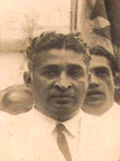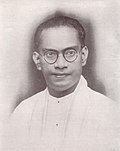| |||||||||||||||||||||||||||||||||||||||||||||||||
95 seats in the House of Representatives of Ceylon 48 seats were needed for a majority | |||||||||||||||||||||||||||||||||||||||||||||||||
|---|---|---|---|---|---|---|---|---|---|---|---|---|---|---|---|---|---|---|---|---|---|---|---|---|---|---|---|---|---|---|---|---|---|---|---|---|---|---|---|---|---|---|---|---|---|---|---|---|---|
| |||||||||||||||||||||||||||||||||||||||||||||||||
| |||||||||||||||||||||||||||||||||||||||||||||||||
| This article is part of a series on the |
| Politics of Sri Lanka |
|---|
 |
Parliamentary elections were held in Ceylon in 1952. It is notable for being the second and final election overseen and administered by the Department of Parliamentary Elections before its merger in 1955. [1]

